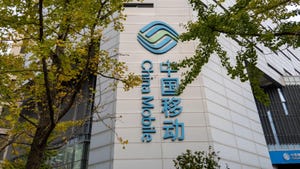Huawei could restart high-chip production this year – reports
Huawei and Chinese government agencies are investing in chiplet technology as a way to beat US sanctions.

Huawei, one of the prime targets of US tech sanctions, is aiming to restart production of 5G and other advanced chips later this year, Nikkei Asia has reported.
Huawei is working with China's biggest chip fab, Semiconductor Manufacturing International Co. (SMIC), on developing a 5G-capable chip that can be put into mass production in a few months, the paper said, citing two sources.
Once one of the world's biggest handset brands, the Chinese firm was sidelined from the global device market after the US denied it access to its most advanced chip-making technology in 2020.
SMIC, which is also subject to US bans for its apparent links to China's military, is limited to 7-nanometer technology. That's two generations behind industry leader TSMC Samsung, which is now mass-producing 3nm chips, most of them reportedly for Apple.
The downside is that the quality may not be high, with one analyst warning that the yield for a 7nm node could be as low as 50%.
A Huawei spokesperson declined to comment on the report.
Further details of Huawei's planned chip reboot are not known, but almost certainly it is taking advantage of chiplet technology.
Chiplets are small disaggregated chips that can be packaged together to form a more powerful chip. Big US firms such as AMD and Intel have produced their own chiplets, which some consider an important future technology because of their flexibility and ability to be customized.
900 chiplet patents
Huawei last year published over 900 chiplet-related patent applications and grants last year in China, up from 30 in 2017, Reuters reports, quoting patent specialist Anaqua.
But it's not just Huawei. China's government and tech sector see chiplets as a means to get past the hi-tech blockade imposed by the US.
In the past two years, at least 20 government policy documents have referred to chiplets as part of a broader strategy to develop key technologies, Reuters said. Public documents also show the government has handed out millions of dollars in grants to researchers specializing in chiplet technology.
China has also begun to set its own chiplet standards – a key step seen as important to the development of the technology. In another breakthrough, Shenzhen-based company Chipuller acquired the chiplet patents of bankrupt US firm zGlue in 2021, according to Reuters.
Controversially, however, the acquisition was made via a two-step transfer, first through a British Virgin Islands-registered firm and then to the Chinese company – a process which appears to have had the effect of avoiding scrutiny by CFIUS, the body that reviews cross-border transactions for security issues.
Hao Qinfen, a researcher at the Institute of Computing Technology of the Chinese Academy of Sciences, said in an interview that although chiplets cannot replace lithography machines at present, in some scenarios the chiplet plus mature process technology can be close to or equal to advanced process technology.
Want to know more? Sign up to get our dedicated newsletters direct to your inbox.
"For scenarios such as data centers that do not require high chip power consumption and area, chiplets can be used to solve the problems of insufficient advanced technology," he said.
Related posts:
— Robert Clark, contributing editor, special to Light Reading
Read more about:
AsiaAbout the Author(s)
You May Also Like












